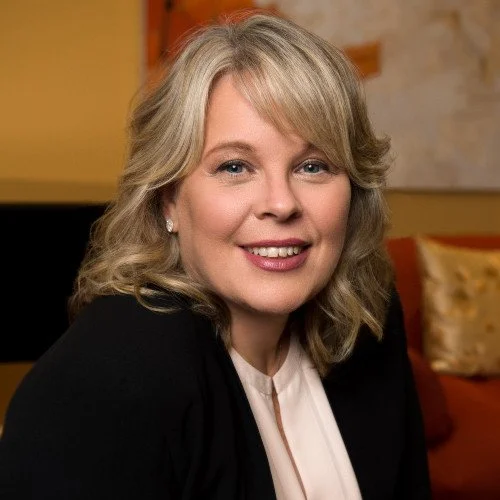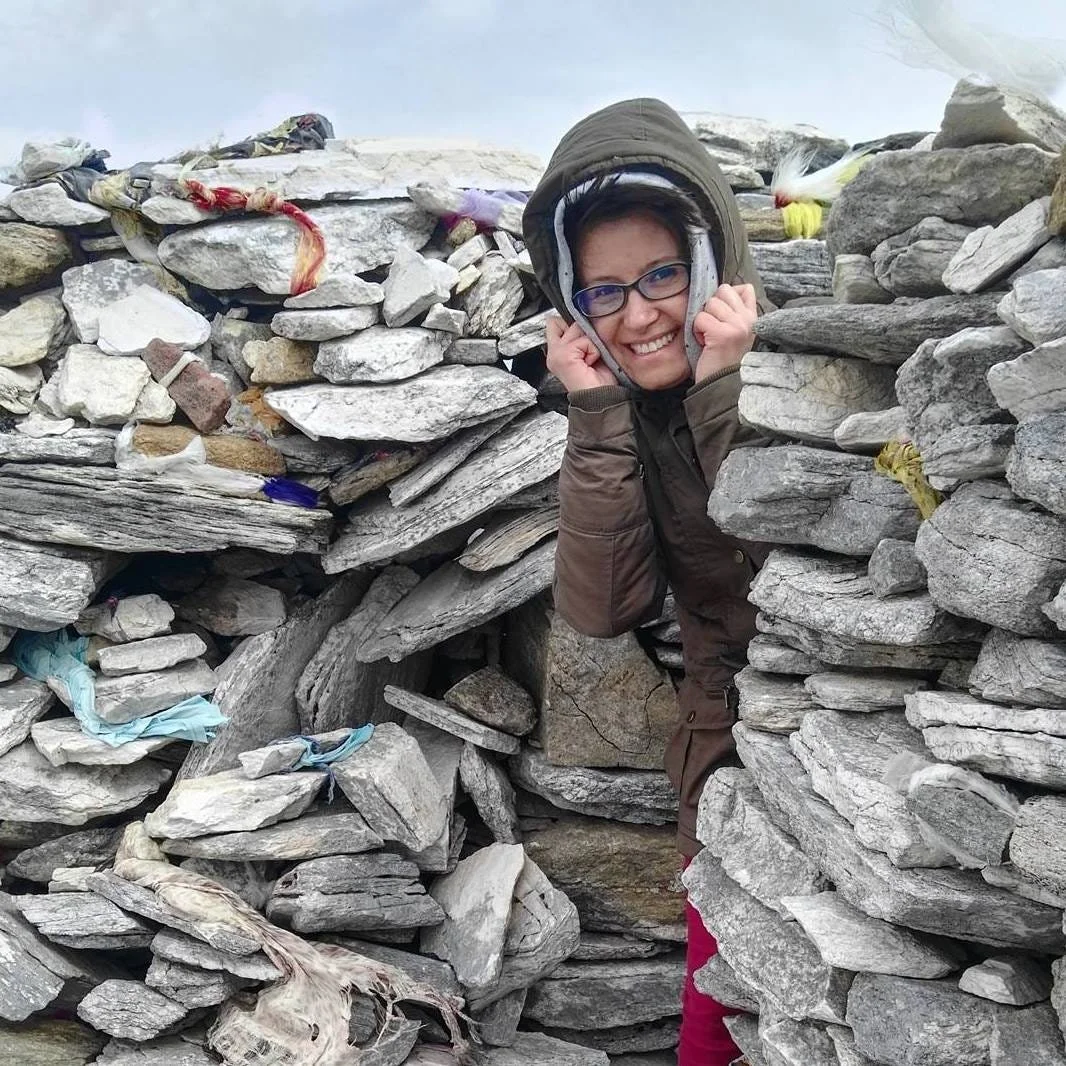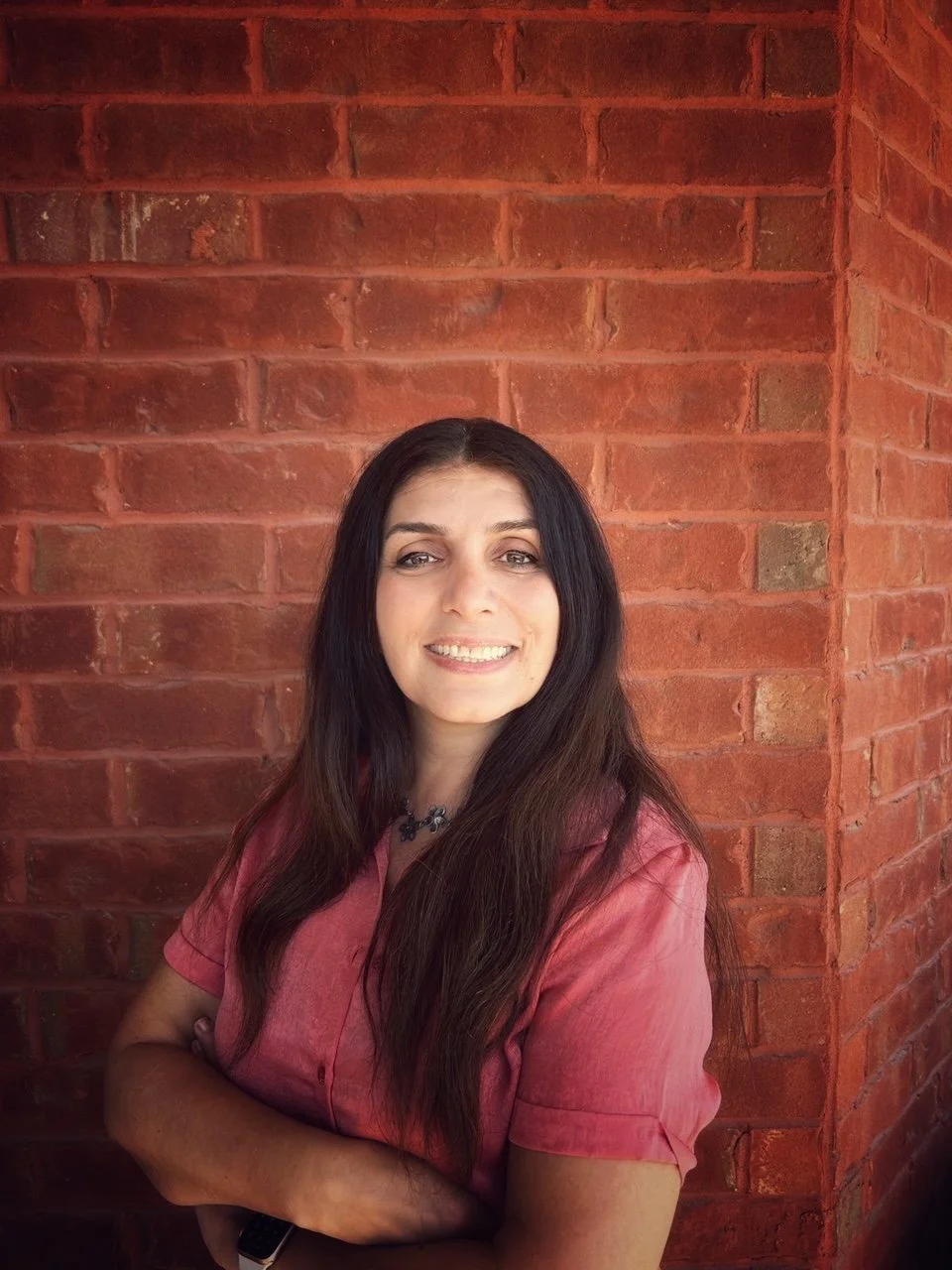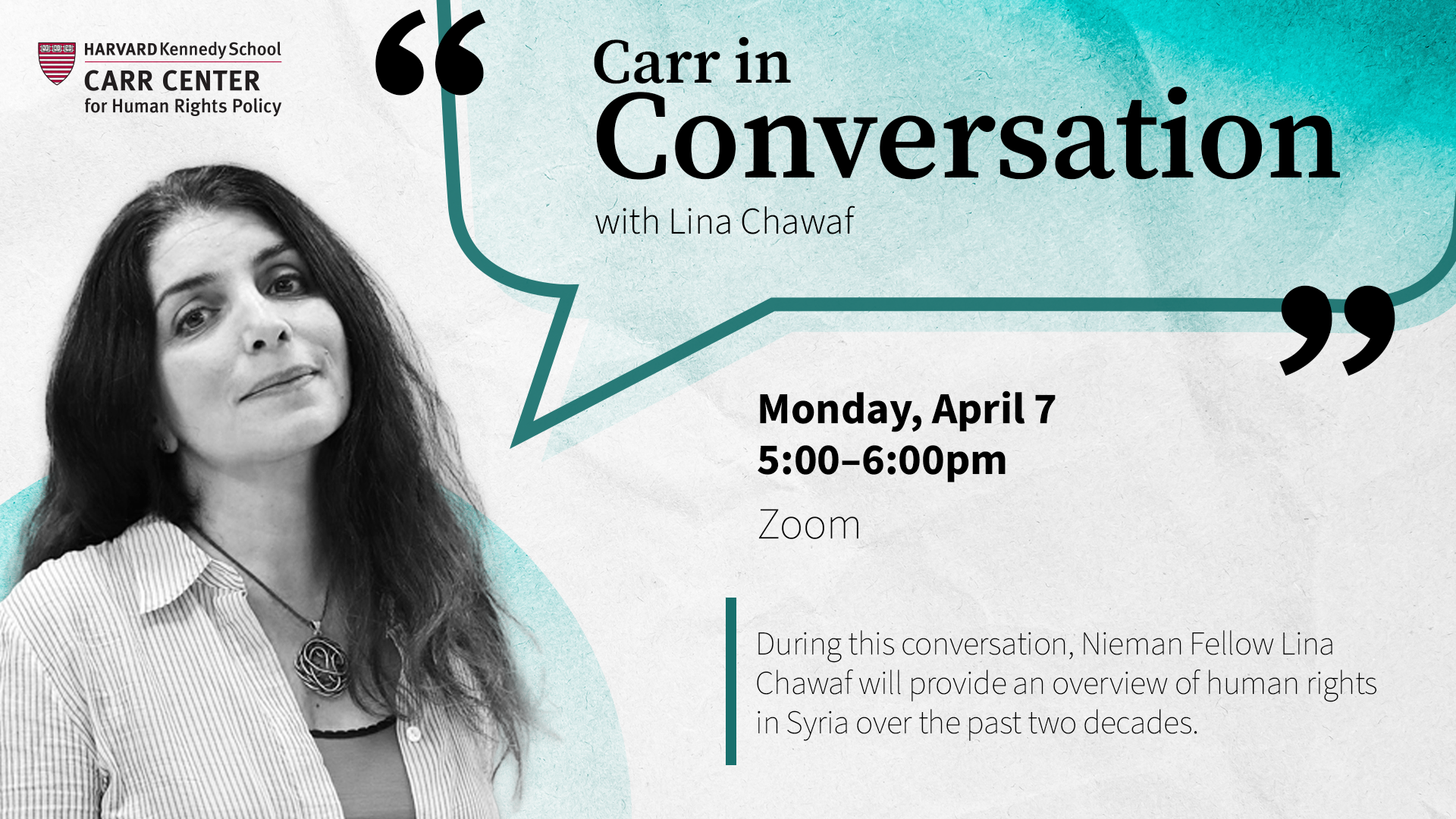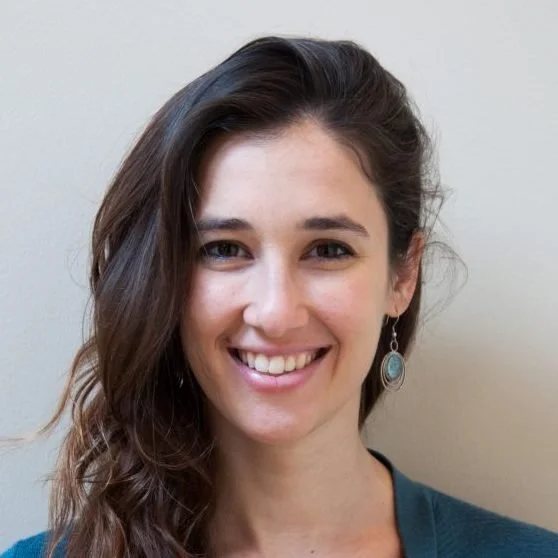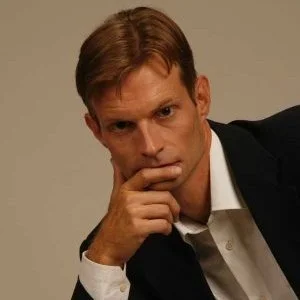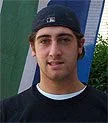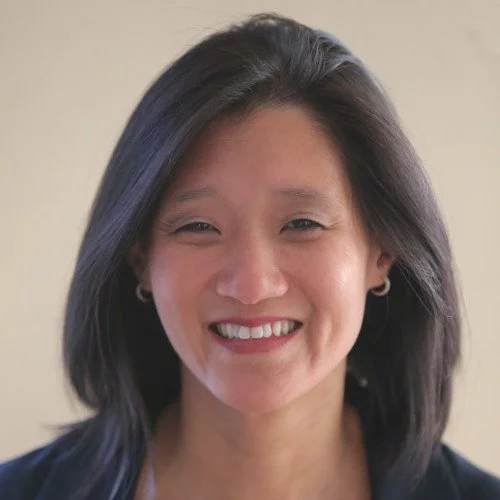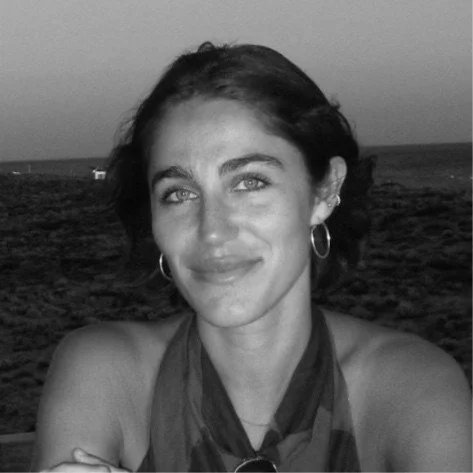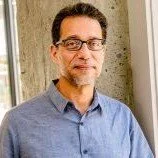Forbes Honors Trebuchet’s Director Jennifer Selendy Among America’s Top Lawyers 2025
Forbes has named Jennifer Selendy, founding partner of Selendy Gay PLLC and one of Trebuchet’s two directors, to its prestigious list of America’s Top Lawyers for 2025. This recognition celebrates attorneys with exceptional legal records, reputations for excellence, and leadership in shaping the legal landscape.
Selendy was recognized for her role in high-stakes litigation. She currently represents Albertsons in a $6 billion merger dispute with Kroger and, in 2024, secured a $1.1 billion trial victory for Fortis Advisors in a landmark earnout case against Johnson & Johnson—the largest such damages award in Delaware history.
Beyond her courtroom achievements, Forbes also highlighted Selendy’s humanitarian leadership as co-founder of the 30 Birds Foundation, which has successfully relocated more than 500 Afghan girls and their families to safety in Canada.
Earlier in 2025, Forbes also recognized both Jennifer Selendy and founding partner Faith Gay among America’s Best-in-State Lawyers for their influence in the New York legal market.
Read more from Selendy Gay: Forbes Names Jennifer Selendy to 2025 List of America’s Top Lawyers
Full list on Forbes: America’s Top Lawyers 2025
AI Resistance Art & Symbols of Resistance: A Visual Archive
Boston Plaza Demonstration
More…
A Graphic composed by Mentor Ehren Brav
Leveraging the power of AI image generation... Feel free to distribute - I certainly will be.
Christina Goldbaum's latest: Syria, Lebanon, and more
Recent articles, videos and podcasts from on the ground in some of the most fragile places in the world by wonderful alum and Convisero mentor Christina Goldbaum, winner of the 2025 Pulitzer Prize for Explanatory Reporting for the New York Times.
To access the latest news from her: https://www.nytimes.com/by/christina-goldbaum#latest
Engineering Diplomacy Playbook
Turning a Handbook into a Living Reasoning System
Engineering Diplomacy transforms static handbooks into dynamic reasoning systems using AI tools like NotebookLM. Shafiqul Islam experimented by uploading chapters from the Open-Source Water Diplomacy Handbook, prompting the AI to create a "Crosswalk Index" linking challenges, tools, and real-world cases across scales like community and transnational levels. The AI excelled at structuring connections and staying grounded in sources, avoiding hallucinations, but fell short by mistaking chapter titles for actual challenges and drifting toward generic "best practices" without assessing conditions for success.
AI mirrors human thinking flaws, such as prioritizing categories over precise problem diagnosis, which is vital in complex fields like water governance where uncertainty and politics intersect. True engineering diplomacy demands "principled pragmatism"—evaluating tools like Joint Fact-Finding for contextual fit, scientific credibility, empathy, and political viability before application. Cases from AquaPedia serve as a "falsification engine," testing handbook principles against real outcomes to evolve the playbook iteratively.
For more info, see the full article here: https://engineeringdiplomacy.substack.com/p/engineering-diplomacy-playbook-deb
How You Can Help the Girls of ASYV Thrive
Agahozo-Shalom Youth Village (ASYV) in Rwanda offers a year-end matching challenge up to $150,000 through December 31, 2025, doubling contributions to education, leadership training, and gender equity programs for vulnerable girls facing poverty or post-genocide challenges.
Two years into a holistic gender equity approach, ASYV shares its curriculum across Rwanda amid funding uncertainties, with results including stronger futures for students and generations ahead.
Support the village here!
When Witness Becomes Action: Building a Children’s Hospital in Gaza
Dear Sherman,
Yesterday, I was moved to my core as we gathered in shared witness: listening, reflecting, and holding what it means to respond to immense human need with compassion and responsibility.
We heard from Dr. David Hasan, a Palestinian-American neurosurgeon, Duke University professor, and the founder of the Gaza Children Village (GCV). Drawing on his frontline medical missions in Gaza, Dr. Hasan spoke about the collapse of critical systems and his decision to envision something more: a community-led model of care that protects children not only in moments of crisis, but also over the long term.
He also spoke of the urgent effort underway to convert an existing facility into what will become Gaza’s only tertiary children’s hospital, a lifeline for newborns, children with injuries, and families who have nowhere to turn.
Watch and share the recording of the talk: https://www.afcfp.org/past-events-data/for-gazas-children-repairing-lives-on-the-ground-with-dr-hasan
GCV has become a refuge for orphaned and highly vulnerable children across the Gaza Strip. Today, they serve more than 8,500 children, providing safe, structured daily environments where children can learn, heal, and grow, supported by education, nutrition, medical care, and psychosocial support.
As we close 2025, we invite you to join the work of repair in Gaza by supporting GCV directly. You can learn more about their mission and support their work here: https://www.thegazachildrenvillage.org/
Thank you for being a part of the collective movement of healing, humanity, and hope. Together, we can help build a future worthy of Gaza’s precious children.
Now is the time to act. Let's grow our movement.
Oxford Debate: Hillel Neuer Calls Out Iranian Opponent for Complicity with Crimes
Last month, the Oxford Union hosted a debate on a proposition that many found startling: "Israel is a greater threat to regional stability than the Islamic Republic of Iran." UN Watch Executive Director Hillel Neuer took the opposition, presenting a detailed examination of regional dynamics, human rights records, and geopolitical realities.
In his prepared remarks, Neuer walked through the facts: Israel's network of peace treaties with Arab states versus Iran's destabilization efforts through proxies; Israel's protections for women and minorities versus Iran's systematic repression. He also directly challenged one of the debate's main proponents on his alleged complicity in regime crimes.
Read the full debate remarks at UN Watch:
Oxford Debate: Hillel Neuer Calls Out Iranian Opponent for Complicity with Crimes
Oleander Alumna Appears on Lebanese National TV and Rotarians in Hiroshima
The Oleander Initiative celebrates the remarkable impact of one Lebanese educator and her students who have extended the lessons of peace far beyond their Hiroshima experience.
During February 2025, Aline, a Lebanese high school teacher, and seven of her students participated in the Oleander Resilience, Rebuilding and Peace Program in Hiroshima. Upon their return to Lebanon, they didn't stop sharing what they learned—they amplified it. Through an origami peace club and school-wide presentations, they inspired hundreds of students and teachers at their school to embrace Hiroshima's peace culture.
Last month, Aline took this mission to a national stage, appearing on four Lebanese television programs—Al Jadeed, Morning Catchy Talk, Murr Television, and OTV Lebanon—bringing the stories and lessons of Hiroshima's resilience and peace to thousands of viewers across the country.
The Oleander Initiative also celebrated the success of its October 2025 Rotary Peace Study Tour, which brought eleven Rotarians from Canada, the United States, and Russia to Hiroshima. Participants studied the culture of peace that emerged from the city's post-war reconstruction, learning valuable lessons about resilience, pacifism, and optimism to incorporate into their service work.
For the full article, visit: Oleander Alumna Appears on Lebanese National TV and Rotarians in Hiroshima – Oleander Initiative
Christina Goldbaum Wins 2025 Pulitzer Prize for Explanatory Reporting
Christina Goldbaum, a young journalist at The New York Times and member of Convisero, has been awarded the 2025 Pulitzer Prize in Explanatory Reporting, alongside colleagues Azam Ahmed and Matthieu Aikins. The prize honors their remarkable work in the New York Times series titled “How the U.S. Lost Afghanistan.”
The award-winning reporting reveals how the United States, years before the fall of Kabul, laid the groundwork for the unraveling of its two-decade war in Afghanistan. Through in-depth investigations and frontline accounts, the series demonstrates the consequences of misaligned strategy, internal dysfunction, and long-ignored warnings.
Explore the full Pulitzer-winning series here:
How the U.S. Lost Afghanistan
Courtesy of The New York Times
In one of the centerpiece reports, Goldbaum and colleagues gained rare access to Sirajuddin Haqqani, one of the most powerful and controversial figures within the Taliban, offering a close view into the inner workings of the regime now governing Afghanistan.
Read the story: Sirajuddin Haqqani Is a Taliban Hard-Liner and Power Broker
A Voice for Critical Truths
Goldbaum’s recognition marks a significant moment not only for foreign reporting but for a new generation of journalists pushing boundaries in international investigative work. Her reporting has consistently centered the lived realities of those caught in conflict, while critically examining U.S. policy decisions with rigor and clarity.
Goldbaum has become known for her fieldwork in difficult and often dangerous conditions. Her work in Afghanistan stands as a testament to the power of explanatory journalism to illuminate complex geopolitical failures with humanity and urgency.
For more on Pulitzer Prize winners and featured stories, visit: Pulitzer.org
To explore more of Goldbaum’s international reporting, follow her work at The New York Times
Münire Bozdemir
Münire Bozdemir is an Acosta Fellow (2025–2026), awarded by the Acosta Institute with support from the Kellogg Foundation for her work at the intersection of education, storytelling, and digital equity. She is a writer, educator, and has been working on developing MyMoon Mixed Media Storytelling, a creative platform that transforms early childhood STEM content into multilingual, interactive storybooks aimed at increasing language access and narrative engagement among children and families around the world.
With over a decade of teaching experience across the U.S., China, and Turkey, Münire currently lectures in Communication and Integrated Media Arts at Juniata College. Her courses—ranging from Intercultural Communication to Digital Storytelling, Media Studies, and First-Year Writing through Miyazaki Films—reflect her interdisciplinary approach to teaching and her commitment to creative, inclusive, and globally conscious pedagogy. She also mentors student research on topics such as interactive journalism, empathy in news narratives, and historical crime reporting in small-town newspapers.
A firm believer in the social power of storytelling, Münire organizes monthly Moth-style story events in central Pennsylvania and has led international science writing and creative writing workshops with students and faculty in China, Turkey, and the U.S. Her projects have been supported by the PA Arts Council, the Turkish American Society’s Moon and Stars Project, and Penn State’s LaunchBox Accelerator. She has also designed faculty workshops on intercultural communication, created traveling, story-based ESL classes, and collaborated with educators worldwide to help make scientific, cultural, and emotional knowledge more accessible through story.
Her work asks how stories move across borders—linguistic, political, disciplinary—and how they can be used to bridge differences, deepen empathy, and design more inclusive futures.
Explore her projects at mymoonstories.com and humanlandscapes.
Meeting Lina was a consequence of Convisero working, as I was introduced to her by Sarah Roy. In our conversations, I was extremely impressed by her courage and sustained efforts on behalf of democracy in Syria. With her permission, I have entered her and her concept note here as I will be distributing it to many of our community who I expect will help her. Welcome Lina!
Lina Chawaf
With a career spanning over three decades to give voice to voiceless especially women, I’ve had the privilege of working across TV, radio, and print media since 1992. I’ve created hundreds of TV commercials and numerous clips for UNICEF, and I’ve been deeply involved in the media landscape, establishing two radio stations in Syria, including Arabesque, where I served as the Program Manager for seven years.
My work has extended to writing for newspapers like Baladna in Syria and Almoustakbal in Canada, as well as magazines such as Shabablek and Sabaya in Syria.
Recognized writer for the international media like Washington Post, Globe & Mail, Boston Globe, etc.
As a media consultant with IMS in the Middle East, I’ve been part of several initiatives, including founding radio stations in conflict zones like Libya, Yemen, and Syria.
Training thousands of Arab journalists and media workers. Coaching tenths of media leadership in conflict areas. Public speaker in tenths of conferences, workshops and international events.
One of my proudest achievements is founding Rozana Radio in Paris, a station supported by international organizations that now operates in Paris, Gaziantep, and Syria. I also served as the President of CMFE, advocating for human rights, women’s rights, and freedom of expression through media.
In recognition of my efforts, in fighting for human rights and especially the women ones, I received the 2018 Reporters Without Borders’ Press Freedom Award. Additionally, I’ve shared my knowledge as a teacher at ESJ (Ecole Supérieure de Journalism) in Paris, France.
I got the Nieman fellowship from Harvard for 2024-2025
I 'm a visiting researcher in CMES @Harvard doing research about Women Leadership in Conflict
A visitor Fellow @TUFTS
I'm writing my memoir starting a workshop "Memoir Generator" @GrubStreet
Concept Note: Establishing an Independent Institute for Syrian Research and Studies
Project Title
Establishing an Independent Institute for Syrian Research and studies: A Collaborative Initiative for Evidence-Based Studies, Dialogue and exchange.
Background and Rationale
14 years into the Syrian conflict, the country continues to face deep politic, social, and economic fragmentation. Despite its regional significance, Syria lacks independent scientific and policy-oriented research institutions even for 50 years. Academic research has been heavily restricted, leaving a void filled by external and often politicized analyses. This initiative aims to establish the first Independent Institute for Syrian Research and studies, a platform for rigorous, locally grounded research, open academic dialogue, and informed policymaking.
Purpose of the Initiative
The proposed Institute will serve as an independent, non-profit academic hub dedicated to producing multidisciplinary research on Syria’s science, economic, social, and cultural realities. It seeks to advance free inquiry, promote inclusive dialogue, and empower the next generation of Syrian researchers and students to shape evidence-based policies.
Objectives
- Promote independent, field-based research on Syria’s evolving social and academic structures.
- Create academic opportunities for Syrian scholars and youth to contribute to policy discussions.
- Preserve and digitize Syria’s cultural and historical archives for scholarly use.
- Foster partnerships with universities and international academic institutions ensure high research standards and global engagement.
- Serve as a objective platform for dialogue and knowledge exchange among scholars, policymakers, and civil society actors.
Proposed Collaboration with Academic Institutions
The initiative seeks partnerships with leading universities and research centers specializing in conflict studies, public policy, and social sciences. Such collaborations will strengthen academic credibility, enable knowledge exchange, and ensure the dissemination of research outcomes to global audiences.
Areas of Collaboration
- Joint research programs on governance, peacebuilding, and regional dynamics.
- Faculty and student exchanges supporting the capacity development of Syrian researchers.
- Collaborative publication of research papers, policy briefs, and thematic studies.
- Organization of international dialogue forums bringing together scholars and policymakers.
- Support for training modules in conflict-sensitive research, media, and policy communication.
Expected Outcomes
- Establishment of the first Independent Institute for Syrian Research and studies:.
- • Enhanced production of evidence-based research to inform peacebuilding and governance.
- • Improved cooperation between Syrian and international academic communities.
- • Strengthened role of research and studies in promoting dialogue, social cohesion, and institutional reform.
Implementation Approach
The initiative will follow a phased implementation approach, beginning with the establishment of an advisory board, a core research team, and partnerships with university and academic institutions. A digital platform will serve as a hub for publications, dialogue, and archiving efforts. The approach emphasizes collaboration, transparency, and academic independence.
Conclusion
By supporting the creation of an Independent Institute for Syrian Research and studies: partner universities and research centers will contribute to rebuilding the intellectual foundations necessary for peace, governance, and sustainable development in Syria. This initiative represents a unique opportunity to advance academic freedom, foster evidence-based policymaking, and promote cross-cultural dialogue.
Carr in Conversation with Lina Chawaf
During this conversation, Nieman Fellow Lina Chawaf will provide an overview of human rights in Syria over the past two decades. She will highlight the experiences of Syrian journalists who faced arrest, torture, and death at the hands of the Assad regime for their reporting on human rights violations. Chawaf also will examine the evolving status of women's rights, tracing their development from the onset of the Syrian Revolution to the present day.
Event Details:
Date & Time: Monday, April 7, 2025, 5:00-6:00pm EST
Format: Online via Zoom
Host: Carr Center for Human Rights Policy, Harvard Kennedy School
Recording: https://www.youtube.com/watch?v=Bh1H6MFiLgg
Rick Berry
Rick Berry is a singular American artist — a pioneer whose work connects the history of figurative painting to the birth of the digital age.
Raised on comics, album covers, and whatever visual culture the street threw at him, Berry left school at seventeen and entered the world of underground comics as a self-taught artist. He never stopped innovating. Working from the Boston region, he has built a career that has fused oils, charcoal, digital painting, popular media, and classical technique into a visual language that feels both ancient and futuristic.
Rick Berry is internationally recognized as one of the earliest true new media innovators.
He is credited with creating the world’s first digitally painted book cover, for William Gibson’s landmark cyberpunk novel NEUROMANCER in 1984 — a moment that art historians now cite as a turning point in the evolution of digital art as a serious medium. He later collaborated directly with Gibson and with film and media studios, including serving as part of the three-man team that conceptualized and produced the award-winning climactic CGI sequence for Sony Pictures’ Johnny Mnemonic, bringing cyberpunk aesthetics into film at a formative moment in its history.
Over the decades, Berry’s work has appeared on book jackets, in galleries, in performance pieces and experimental installations, on album covers, and in media productions. The throughline is constant: Rick Berry insisted — from the very beginning — that the digital realm was not a gimmick, but a canvas. And he treated that canvas with the seriousness and painterly ambition of a master draftsperson.
Rick Berry’s career is a study in artistic courage. Self-made, self-taught, and decades ahead of the curve, he helped open the door to what the world now takes for granted — that digital art can be as tactile, as intimate, as narrative, and as emotionally human as the most traditional brush on linen.
Rachel Brown
Rachel Hilary Brown is a visionary leader in strategic communications for peacebuilding whose work has changed how practitioners, policymakers, and communities prevent identity-based violence. A Tufts University graduate in International Relations, Rachel began translating academic research into practical tools while still a student through her engagement with the Institute for Global Leadership (IGL) at Tufts — including early peacebuilding and communications initiatives that directly shaped her career-long focus on how civic communication can reduce the risk of electoral and communal violence.
After Tufts, Rachel moved to Kenya and founded Sisi ni Amani–Kenya (SNA-K), an NGO that pioneered the use of community-focused SMS and civic engagement campaigns designed to interrupt rumours and reduce the likelihood of election-related violence. Her model combined field research, audience segmentation, and rapid message design to equip local communities with tools to act faster than rumours and inflammatory speech — an approach that became the laboratory for her strategic theory of “dangerous speech.”
Building on that fieldwork, Rachel authored Defusing Hate: A Strategic Communication Guide to Counteract Dangerous Speech, published through the United States Holocaust Memorial Museum (USHMM) — Simon-Skjodt Center for the Prevention of Genocide. The guide reframes the problem from abstract debates about “hate speech” to a pragmatic, audience-focused method of preventing speech that raises the risk of mass harm — offering tools for audience analysis, message framing, medium selection, and speaker strategy now used by governments, NGOs, and community groups worldwide.
Rachel has been recognized repeatedly for the impact and innovation of her work. She was named a PopTech Social Innovation Fellow (2012); served as a Genocide Prevention Fellow at the United States Holocaust Memorial Museum (2014); and has been invited to speak and advise at institutions including MIT Seminar XXI, Columbia University’s Journal of International Affairs, the United States Institute of Peace, and national and international conferences on conflict prevention and communications. She also founded Over Zero, an organization devoted to building resilience to identity-based harm through strategic communication.
Her honors and recognitions highlight both innovation and leadership: media profiles, keynote invitations, fellowships, and civic awards that reflect her dual commitment to applied research and community impact. In short, Rachel Brown has moved from student research at Tufts’ Institute for Global Leadership to global influence — transforming analytic insight into tested, scalable practice for protecting vulnerable communities.
Rachel’s personal note to Sherm :
“Sherm, without the opportunities to challenge my ideas of the world, dive deeply into books, travel and ideas and history and research and on and on, I would not have begun the journey that led me to write this book.
There are opportunities created by you through EPIIC & the IGL, and for which I am forever grateful.
I hope you enjoy the truly interdisciplinary pursuit here — an initial attempt to bring insights and learning across sectors & geographies together on this important subject.
With love,
Rachel.”
Beth Bishop
Beth Bishop is a dynamic, nationally recognized transformational fitness leader, entrepreneur, and health and wellness consultant whose career has bridged the worlds of elite athletic discipline, global leadership education, and the culture-making innovation of Los Angeles’ performance and training community.
Bishop is best known as the former CEO and Owner of The Phoenix Effect, the highly respected fitness and wellness company in Los Angeles known for its community-building, strength-driven, deeply body-positive training culture. As a personal trainer, group instructor, and executive, she built programs that not only strengthened bodies, but also helped hundreds of people step into confidence, power, identity, and sustainable long-term physical practice. She has since expanded her platform as a keynote speaker and as a highly sought-after independent Health and Wellness Consultant advising leaders, organizations, and community groups. Her roots in resilience and high performance go back to Tufts University — where she earned her bachelor’s degree in Political Science and German in 2006. While at Tufts, Beth was not only a scholar — she was a full multidimensional athlete + global studies practitioner:
• EPIIC 2006 — core student in the colloquium: The Politics of Fear
• Traveled to Abu Dhabi, UAE to attend the “Women as Global Leaders Conference”
• Performed as Alice Fisher in the Senate mock hearing on the Patriot Act at the Law Library of Congress in Washington, DC
• Tufts Women’s Varsity Swim Team
• Tufts Marathon Team — ran her fourth marathon in Vermont while still a student
• Awarded a Fulbright Scholarship and went to Hamburg, Germany following graduation
That combination — scholar of political power and fear, endurance athlete, global leadership fellow, and then Fulbright Scholar — foreshadowed her later philosophy that physical training can itself be a site of social impact, radical self-determination, and mental liberation.
Today, based in Los Angeles, Beth Bishop continues to expand the meaning of health leadership — crossing the boundaries between mind, body, emotional cognition, identity formation, and community belonging. She is admired as an inspirational speaker, a builder of inclusive fitness culture, and a rare voice who has lived in both worlds — international public policy and micro- level human transformation.
She embodies — in one career — the ethos that Tufts and the IGL sought to instill: intellectual courage, global awareness, and a fearless commitment to strengthening the human condition — literally and metaphorically — one person, one class, one community at a time.
Mark Munger
Mark Munger is a distinguished global practitioner, educator, and innovator in the Positive Deviance (PD) movement – the globally recognized approach to complex social change developed originally in partnership with Tufts University’s Institute for Global Leadership. For more than two decades, his work has helped establish Positive Deviance not merely as a method, but as a moral orientation to problem-solving: solutions already exist in the community, among the least expected groups, and the work is to discover, amplify, and operationalize them.
His involvement with Tufts IGL and EPIIC circles back to the era when the Positive Deviance Initiative was housed at the Institute for Global Leadership. Through that nexus, Mark worked with generations of students, faculty, and public sector partners, advancing PD as a rigorous alternative to top-down expertise. He became an influential mentor and collaborator inside the IGL community, particularly in areas where complexity science, social change, and field-based learning intersected.
Today, his portfolio is both global and local – and always anchored in lived systems.
Mark is currently leading a major effort funded by the Bill and Melinda Gates Foundation to transform classroom practice in Long Beach, California by discovering what outlier teachers are doing right, and scaling that learning systemically. He continues his work in Denmark, originally through the Ministry of Justice, now expanding into mental health, drug use, and corrections. Denmark’s deep democratic reflex – the reflex of believing citizens already possess the capacity to solve their own problems – makes Positive Deviance a particularly resonant method there. That partnership has now led to the founding of the Positive Deviance Academy of Denmark, in alignment with the Copenhagen Business School.
Closer to home, he is currently working with Novartis Oncology to examine how PD can strengthen the design and execution of clinical trials for widespread disease and raredistributed clinical states. His newest frontier is applying PD to food sourcing and food preparation in low- income communities, both rural and urban – bringing the method full circle to everyday survival challenges.
His intellectual network spans complexity science communities including Plexus Institute, where he has helped advance method, narrative, and praxis in human systems.
Mark is also a teacher of teachers, and a mentor of leaders. He is known for his generosity, his reflective spirit, his curiosity, and a deeply democratic professional ethic.
His educational background includes advanced study in public policy, organizational behavior, and social systems – training that he has consistently translated into field practice rather than theory.
He and his wife Kate are based part of the year in midcoast Maine, in an old farmhouse that has become a gathering space of children, grandchildren, and colleagues. Their daughter Amelia is a litigator in New York, their daughter Hannah teaches fourth grade in Brooklyn, and their son Will is a chef in Portland, Maine.
Through it all, Mark remains in active dialogue with students, with Tufts IGL alumni, with EPIIC alumni, and with systems that are under pressure. He remains a builder of capacity, a discoverer of hidden solutions, a translator across disciplines, and a champion of democratic problem-solving.
His enduring contribution is simple but profound:
Mark Munger believes that the world’s most intractable problems cannot be solved by hiring smart outsiders – but by revealing and learning from the invisible brilliance already alive inside the community itself.
Srdja Popovic
Srdja Popovic is a global educator, strategist, and the cofounder and long time leader of the Centre for Applied Nonviolent Action and Strategies, known as CANVAS, an international training and resource organization that teaches activists how to plan and execute nonviolent social movements. Under his stewardship CANVAS has trained and advised activists from dozens of countries and produced widely used manuals and curricula on nonviolent struggle.
Popovic first came to international attention as a leader of the student movement Otpor, the movement that helped end Slobodan Milosevic’s rule in Serbia in 2000. He subsequently served a term in the Serbian National Assembly, and then focused on education, scholarship, training, public speaking, and writing about people powered change. He is the author of books and practical guides on nonviolent strategy, and he has been a frequent speaker and visiting teacher at universities and policy forums worldwide.
Popovic has been recognized repeatedly for the practical impact of his work. In February 2016 Tufts University presented CANVAS and Popovic with the Jean Mayer Global Citizenship Award, an honor that recognizes moral courage and global public engagement. He was elected Rector of the University of St Andrews in 2017, a student-elected office he held through 2020, and his work has been honored with prizes and lists including selection as a World Economic Forum Young Global Leader and the Penn State McCourtney Institute Brown Democracy Medal.
Education, teaching, and public engagement are central to his profile. Popovic studied at the University of Belgrade, and in later years he has taught courses and given seminars at institutions such as Harvard Kennedy School, and he is a frequent invited lecturer at conferences, TED and major policy forums. His public-facing scholarship combines tactical manuals for activists with analytical reflections on the ethics and practice of nonviolent struggle.
Tufts has engaged with Popovic and CANVAS in multiple ways. In addition to presenting him and CANVAS with the Jean Mayer Global Citizenship Award, students affiliated with the Institute for Global Leadership have worked directly with Popovic and CANVAS through internships and research placements; for example a Tufts Oslo Scholar reported a summer research internship working with Popovic and CANVAS in Belgrade while participating in IGL programs. These interactions illustrate a concrete link between Popovic’s practical teaching and Tufts students’ experiential global learning.
Nikias Stefanakis
Nikias Stefanakis is a global strategist and consultant whose personal lived geography — Athens, Cambridge, Prague, Boston — shaped an international worldview from childhood. Born in Athens, Greece, moving through three countries before age 11, Nikias’ earliest experiences forged in him both a comfort with mobility and an instinct to decode complex cultural and economic systems — the exact instincts that later defined his academic focus and professional life.
Nikias is a proud graduate of Tufts University, where he majored in International Relations and Economics. At Tufts he was not only a disciplined scholar, but also a deeply engaged citizen of the campus. He played goalkeeper for the Tufts Men’s Soccer Team his first year and remained active in the International Club and the Tufts Hellenic Society.
As for the Institute for Global Leadership (IGL) at Tufts — Nikias’ undergraduate years were very much IGL-era years. While the publicly available record does not explicitly confirm a formal EPIIC seminar participation or specific IGL fellowships, Nikias’ International Relations major, his campus organizations, and his international lived biography put him in the intellectual orbit of IGL’s community and peer set at the time — students whose work was animated by real- world global systems, cross-border understanding, and rigorous policy thinking. His undergraduate profile reads as someone naturally adjacent to that ecosystem.
Professionally, Nikias has built a career in consulting, business strategy, and client advisory work — the type of strategic consulting that sits at the intersection of global markets, organization-building, and cross-cultural analysis. Colleagues and peers describe him as someone who reads organizations, reads people, and reads context — and then gives the kind of clear, precise advisory counsel that creates momentum.
His academic formation — Cambridge Rindge and Latin High School followed by Tufts — was in environments known for social justice literacy, internationalism, and intellectual pluralism. His familial roots in Greece, and youth in the Czech Republic in the years immediately after the fall of the Soviet bloc, gave him personal proximity to some of the most important political- economic transitions of the late 20th century.
Julie Chang
Julie Chang is a mission-driven entrepreneur and CEO whose career sits precisely at the catalytic intersection of infrastructure, sustainability, and innovation. Trained in engineering and management — including graduate studies at MIT’s Sloan School of Management — and further sharpened by her undergraduate experience at Tufts University, Julie has spent more than two decades taking technologies, ideas, and early-stage business models and scaling them into real operating businesses that improve lives, decarbonize systems, and modernize the built environment.
Her path has been marked by both technical depth and strategic leadership: she has led P&L growth, restructured business units for scale, and brought climate-positive technologies to market in the United States and internationally. As CEO, she is known for aligning diverse and cross- functional teams toward a shared transformative outcome — and then building the capital stack, regulatory strategy, and operating cadence that makes that transformation real.
Julie is widely recognized across her industry for thought leadership and results. She is the recipient of the Patrick McGovern Entrepreneurship Award; has been featured in Biz Journal’s “In Her Own Words” series, as well as the MIT Alumni Magazine — and her project leadership has been honored by both ACEC (the American Council of Engineering Companies) and AWWA (the American Water Works Association). She is a sought-after speaker and writer on the future of resilient cities, decarbonized infrastructure, and health-driven design.
Julie Chang is also a civic leader. She serves on the Board of Sustainable Westchester and the New York League of Conservation Voters, where she focuses on the activation of policy, markets, and community partnerships to accelerate climate transition and environmental equity in the greater New York region
Noa Sklar
Noa Sklar is an inventive architectural designer whose work blends rigorous material inquiry with a nimble, programmatic imagination. Trained first in the visual arts and business at Tulane University and now completing a Master of Architecture at Parsons School of Design (The New School), Noa has developed a concentrated interest in the interstices of city fabric and the material stories that give places memory and meaning. Her Parsons thesis—an exploration of the “spaces that slip between” the Manhattan grid and an argument for weaving program and structure through those overlooked voids—demonstrates her ability to pair conceptual rigor with thoughtful spatial tactics.
Professionally, Noa brings this cross-disciplinary perspective to practice as an architectural designer with Rebelo de Andrade in Portugal, where she contributes to design, detail, and research across the studio’s built and speculative projects. Her international practice experience complements academic work that foregrounds materiality and sensory memory; earlier undergraduate investigation at Tulane focused on texture, material histories, and their connections to memory—an intellectual thread Noa continues to pursue in her built-environment work.
In addition to studio practice, Noa has participated in research roles that reflect her interest in the life-cycle and health of materials. She is listed as a student research assistant with the Healthy Materials Lab at Parsons’ Constructed Environments program, where her background in art, marketing, and architectural investigation supports interdisciplinary projects that interrogate material performance, sustainability, and embodied experience.
Joel Sklar
Joel Sklar is a civic-minded leader and seasoned real-estate developer whose career has shaped neighborhoods across Greater Boston. A proud honors graduate of the University of Florida, he earned his J.D. from Harvard Law School in 1989 and began his professional career in private practice, later moving into development and real-estate leadership. Joel joined Samuels & Associates as a principal in the late 1990s and today serves as President / Principal, where he oversees strategic planning, capital raising, acquisitions and transformational development projects — work that has included major Fenway-area redevelopments and urban mixed-use initiatives.
Beyond the boardroom, Joel has long combined civic stewardship with place-making. He has chaired the Boston Main Streets Foundation for nearly two decades, helping to channel grants, small-business support and creative neighborhood programming into Boston’s commercial districts. He also serves on the boards of Nuestra Comunidad Development Corporation (supporting affordable housing and economic development in Roxbury) and Boston Medical Center’s philanthropic trust — roles that reflect his commitment to equitable neighborhood revitalization and community wellbeing.
Joel’s career path includes partnership at the law firm Goulston & Storrs and leadership roles in real-estate development (including Director of Latin American Development for New England Development) prior to his tenure at Samuels & Associates, where he has been a driving force in place-making, finance, leasing and adaptive re-use projects. Industry peers regularly recognize his influence: he has been profiled in Boston Magazine and other trade outlets as one of the Boston region’s most influential real-estate figures.
